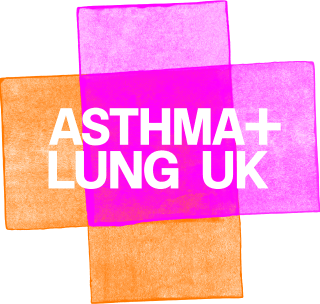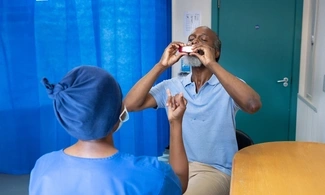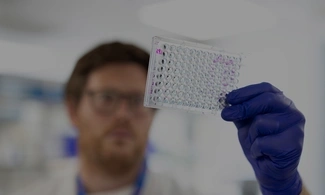How do you say primary ciliary dyskinesia?
Ciliary is pronounced see-lee-uh-ree
Dyskinesia is pronounced dis-kuh-nee-zee-uh
What is primary ciliary dyskinesia?
Primary ciliary dyskinesia (PCD) is a rare genetic condition that affects how cilia work.
Cilia are tiny hair-like structures in your chest, nose, sinuses and ears. They move constantly to clear mucus from your airways.
When cilia do not work properly, mucus can build-up in the airways. This can lead to inflammation and infections in your lungs, nose, sinuses and ears.
PCD is a life-long condition that affects around 1 in 7,500 people in the UK.
What causes PCD?
PCD is caused by changes in one or more of your genes. These are called gene variants.
More than 50 genes affect how the cilia in your airways look, work and move.
PCD Support UK has more information about the causes of PCD.
Outlook for primary ciliary dyskinesia (PCD)
PCD is not considered a life-threatening condition, but it can get worse over time.
Treatments can maintain or even improve your lung function and symptoms. But currently there’s no cure.
Treatment should begin as early as possible to lower the risk of scarring on the lungs, called bronchiectasis.
Symptoms of PCD
PCD affects everyone differently. Common symptoms include:
- a blocked or runny nose that does not go away
- a chesty or wet cough, even when you feel well
- lots of phlegm (sputum) which you need to cough up
- hearing problems caused by ear infections or glue ear. Glue ear affects half of people with PCD.
- wheezing (noisy breathing)
- shortness of breath
- frequent lung infections such as pneumonia, bronchitis and bronchiolitis.
These are also symptoms of lots of common childhood illnesses, so it can take time to diagnose PCD.
Other signs of PCD include babies born on time (full-term) who need oxygen for no clear reason and repeated chest infections.
Situs inversus
Situs inversus is when your organs in your chest and tummy are on the opposite side to normal. It’s usually harmless and does not cause any symptoms or complications.
If you have situs inversus, you might have a subtype of PCD called Kartagener Syndrome.
Half of all people with PCD have situs inversus.
How is PCD diagnosed?
Getting a diagnosis for PCD as soon as possible can help improve or maintain normal lung function.
Most people have PCD symptoms from birth. But you or your child may not get a diagnosis until school age or older. This is because there’s no single test that can diagnose PCD.
If you or your child’s doctor thinks you may have PCD, they’ll refer you to a specialist clinic or centre. They’ll ask you about your symptoms, family history and may do some tests.
Diagnosing PCD in older children and adults
Getting a PCD diagnosis when you’re older might provide a sense of relief. It can explain what’s been happening and it can help you get the right treatment for your symptoms.
It can take time to get used to the new treatments and physiotherapy. Our helpline is here to support you with all aspects of living with a lung condition – whether you need practical advice, emotional support, or answers to health-related questions.
Tests for PCD
Your specialist may need to do more than one test to confirm you have PCD.
| Type of test | What happens? | What does it show? |
| Genetic testing |
Genetic testing is usually done using a blood sample. Experts will analyse your blood in a laboratory. |
Genetic tests identify around 7 in 10 people with PCD. Research is continuing to find new genes linked to PCD. This will help improve how many people can be diagnosed using genetic testing. |
| Nasal nitric oxide test |
A small spongy plug will be put gently into your nose. Afterwards you’ll take a deep breath in through a mouthpiece and then breath out steadily for 10 seconds. |
The amount of nitric oxide in your nose. This is a natural gas produced by your body. People with PCD usually have less nitric oxide in their nose than normal. |
| Nasal brushing | A sample of cilia (tiny hairs) is taken from your nose using a tiny brush. |
How your cilia look under a microscope and if they’re moving as they should. If you have PCD, your cilia do not work properly. |
Your specialist may also look at your lungs using:
- a chest X-ray
- a CT scan
- lung function tests, such as spirometry.
How is PCD treated?
In the UK, everyone with PCD will be registered with a specialist team who looks after them. The PCD team will agree on the best care and treatment for you.
The team that will support you and your family include:
- respiratory nurses and doctors
- physiotherapists
- ear nose and throat (ENT) specialists
- psychologist
- speech and language therapist or hearing specialist, if PCD affects you or your child’s speech or hearing
- dietician, if PCD affects you or your child’s growth or weight.
You’ll see this specialist team for a PCD review at least once a year. Regular check-ups at your local hospital can also help you or your child manage PCD symptoms.
You can speak to your PCD specialist team and respiratory nurses if you have any questions between appointments.
Airway clearance
Airway clearance is a type of physiotherapy that helps loosen and clear phlegm (sputum) from your airways. Coughing alone is not enough to remove phlegm in the lungs.
You’ll usually need to do physiotherapy twice every day, even if you have no symptoms.
Physiotherapy can help:
- improve breathlessness, wheezing and coughing
- reduce infections and inflammation
- reduce the risk of long-term lung damage
- improve your wellbeing.
Your doctor should refer you to a specialist called a respiratory physiotherapist. They can show you the best airway clearance technique for your age and condition.
Helping your child with physiotherapy
It might take some time for your child to feel comfortable with physiotherapy, but it does get easier over time.
- Make physiotherapy a part of your child’s daily routine to help it become a normal part of their day. This could be when they wake up and before they go to bed.
- Planning ahead can be helpful if your routine changes or you’re away from home.
- Reassure and praise them. Helping your child understand that physiotherapy will make them feel better may encourage them to do it.
- Try listening to music or doing something else your child likes to make it as enjoyable as possible.
Your child’s PCD team are there to help you if your child is finding physiotherapy hard.
Medicines
Medicines for PCD include:
- salty water (saline) either by a nebuliser or as a nasal rinse can help clear mucus in the chest, or nose and sinuses
- inhalers to reduce inflammation and help keep your airways open
- targeted antibiotics to treat infections. Your specialist team can regularly take phlegm (sputum) or cough samples to check for infections.
Nebulisers with salty water (saline) help some people to loosen the phlegm before they do physiotherapy. Some nebulisers may be given after physiotherapy because that type of nebuliser takes longer to work.
Watch our short videos to find out how to use your inhaler, if you have one.
Do not take cough medicine
Try to avoid taking any medicine that stops you coughing, such as cough syrup. It’s important that you cough to help clear your airways. This can help prevent infections.
Caring for your child with PCD in an emergency
Speak to your child’s doctor to make sure you understand what to do in an emergency.
Your child may need hospital treatment if they:
- have symptoms which suddenly get worse. This is called a flare-up or exacerbation
- have a chest infection.
If your child needs hospital treatment, they might have stronger antibiotics delivered into a vein and more chest physiotherapy. Your child might also have an inhaler to reduce inflammation in their airways.
Children with PCD are more likely to have asthma. If you think your child might have asthma symptoms, speak to your doctor or nurse as soon as possible.
Newborn babies and breathing problems
Around 7 in 10 newborn babies with PCD have breathing problems. They often have a runny nose or chesty cough for a few days or weeks.
Babies usually recover quickly from breathing problems. But they may need some oxygen treatment for a few days or weeks to help them.
Moving from child to adult services
When your child is 13 or 14 years old, they’ll begin preparing to move from child to adult services. They’ll continue their regular airway clearance exercises and medication.
Moving to adult services can feel like a big change because some of the specialist team that help you and your child may change. There will be a new team to support you and lots of steps in place to make the move as easy as possible.
Talking to your child about their treatment may help you both feel more confident about managing their condition. Your child may be happy talking to their friends or teachers about their PCD, or they might prefer to keep it private.
Your child’s PCD team can also help to support their needs at school by working with their teachers to help them understand the condition.
If you’re concerned about how your child is managing life with PCD, speak to their specialist healthcare team.
Living well with PCD
Self-management is an important part of living well with PCD. Here are some practical things you can do to help manage your symptoms.
Keep active
Staying active is important for both adults and children with PCD.
Regular physical activity can support your daily physiotherapy.
It can help you or your child to loosen and clear phlegm from your lungs more easily, and help you better manage your symptoms.
Learn more about staying active when you have a lung condition, including information about our Keep Active programme.
Breathing techniques
There are different breathing techniques that can help you or your child manage breathlessness.
Speak to you or your child’s physiotherapist about the best techniques. Find out more about breathing techniques and positions to ease breathlessness.
Stay hydrated
Drinking lots of fluid like water helps keep your airways slippery. This can help your physiotherapy by making it easier to cough up the mucus.
Make hydration a part of your daily routine or encourage your child to drink regularly throughout the day.
Improving indoor air quality
The air quality in your home can affect you or your child’s symptoms.
It’s helpful to understand anything that can make you or your child’s PCD symptoms worse. Find out more about air pollution and allergies in your home.
We also have advice about how to improve air quality in your home and what to do if you’re still getting symptoms.
Stop smoking and vaping
Stopping smoking is one of the best things you can do for your health. We have advice and support to help you stop smoking and vaping.
It’s important to avoid exposing your child to second-hand smoke.
Try to avoid smoking or vaping near your child and ask others to do the same. We have more information about risks to your child’s lungs as they grow.
Vaccinations
PCD can increase you or your child’s risk of infections.
Make sure your child has had all their routine childhood vaccinations, as well as the pneumococcal vaccine and annual flu vaccine.
Speak to your GP surgery to check if you or your child are eligible for the COVID-19 vaccine. They can also tell you if you and your child have had all the vaccinations you need.
Take care of your mental health
Living with a long-term lung condition can affect every part of your life.
There is help available:
- speak to your GP about mental health support
- read our information about managing your mental health for people with a lung condition
- join one of our support groups or our Health Unlocked forum to connect with other people with similar experiences to you
- having a child with a lung condition can have a big impact on the whole family. Our Parent Carer Support Network is a safe and friendly place to talk to other people who understand.
PCD Support UK also offer specialist support for people living with PCD, including advice about going to university and starting a new job.

Get support
Call our helpline for support with your condition. Get advice on your medicines, symptoms or travelling with a lung condition, or just call us to say hello.








